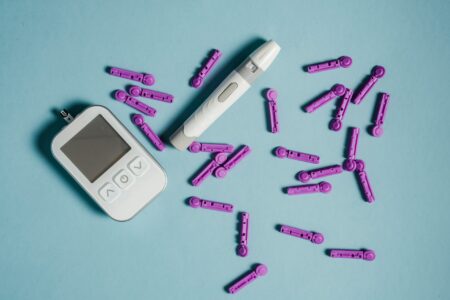If you remain under your optimal net carbs limit, then you should enter ketosis within 2 to 3 days, but it can take up to 7 days.
The fastest way to get into ketosis is to exercise on an empty stomach, in order to accelerate the depletion of glycogen in your body. You can also do a Fat Fast for a few days (eating more fat) to speed up the rate at which you enter ketosis AND start to cut out refined carbs (like sugar) before you go for full ketosis. Another option is to do a water fast, (only drinking water) which also speeds up getting into ketosis.
Ketosis is the main goal of keto. When your body switches to this metabolic state, it starts utilizing ketones instead of glucose for fuel. Being in ketosis comes with benefits like weight loss, reduced risk of disease, and mental clarity.
The time it takes to enter ketosis varies from one person to the next. You can enter ketosis quicker or later depending on your body composition, diet, and activity levels. However, there are averages and limits you should know about.
How Long Does It Take to Get into Ketosis?
In a nutshell, it takes 1 – 3 days to get into ketosis.
Switching to fat-burning mode is a process that takes many steps to complete. For your body to enter ketosis, it needs to do the following.
1. Deplete its glycogen
When you stop eating carbs, blood glucose levels drop and your body turns to liver glycogen (the stored form of glucose) to help raise your blood sugar.
2. Break down fats
Your insulin levels drop in response to low carbohydrate availability. This drop triggers the breakdown of fatty acids as well as their uptake in liver mitochondria (cell organelles).
3. Start making ketones
Within the next few days, your liver will start making ketones to meet your body’s growing energy demands. The brain is dependent on a constant influx of fuel, so it will be using up most of the ketones made.
How Fast Can You Get into Ketosis?
You’re probably wondering what is the absolute fastest way to get into ketosis and we promise that you can get into ketosis within as little as 12 hours’ time.
However, this will be only mild ketosis, and you’re unlikely to feel any benefits just yet. Once ketone levels reach 1.5-3 mmol/L, which can take anywhere between 24 hours to 3 days, you will start noticing some changes. To get into ketosis in 24 hours, follow these 2 steps.
Step 1: Limit carbs to 20g/day
Your carb intake on keto must be below 50 grams per day. But if you can go as low as 20 g, you’ll enter ketosis quicker.
The reason 50 g/day is the standard recommendation largely has to do with safety and comfort; many people are used to eating a carb-based diet, so reducing carbs drastically can lead to carb withdrawal symptoms and even the dreaded keto flu.
Step 2: Exercise
Studies show that exercise increases blood ketone levels 1. That’s because it spends your body’s fuel like circulating glucose and glycogen. On the other hand, if you simply cut back on carbs without working out, it would take your body much longer to deplete its energy reservoir.

Another thing to keep in mind is that post-exercise ketosis depends on several factors: exercise intensity and duration, fitness levels, and, most importantly, carb intake.
What Are the Signs of Being in Ketosis?
Within the first week of going keto (or shortly after fasting), you will notice these ketosis signs and symptoms.
Keto breath
Keto breath resembles nail polish remover or even overripe fruit. What you’re smelling here is acetone, a ketone body that gets expelled by the lungs.
Weight loss
You may lose up to 10 lbs in the first week of ketosis 2. But don’t get excited just yet. This is only water weight, and it will take more time for your body to start burning fat (up to 2lbs a week).
Ketones in urine
This is a sure sign you’re in ketosis. The only way to find out if there are any ketones in your urine is by using ketone urine test strips. You may also look for ketones in your blood with the help of a blood ketone meter, but this is a bit expensive and a bit invasive.
Reduced appetite
Being in ketosis alters levels of nutrients and hormones that control appetite 3,4. This appetite-lowering effect is also controlled by ketones themselves.
Fatigue
Fatigue is mostly the result of electrolyte imbalances caused by loss of water weight we mentioned earlier.

Digestive issues
Any major change to your diet is bound to cause digestive issues until you start producing the right digestive enzymes and until your gut microbiome adjusts 5. Things you may experience include constipation, diarrhea, and stomach pain.
Insomnia
Research found that carb intake impacts sleep architecture 6. While most studies show that keto increases time spent in deep sleep, some people may experience insomnia in the early stages of ketosis.
How Many Carbs Can You Eat and Still Be in Ketosis?
We explained how long it takes to enter ketosis, but how many carbs will get you and keep you there?
Well, most people can easily enter ketosis with 20-30 grams of net carbs per day. You can increase this to 50 g/day if you’re very active and even more if you’re an athlete.
The exact amount of carbs a person can handle and stay in ketosis depends on their activity levels and body composition. Athletes can and should eat more carbs than the average ketoer. Most do this before and after workouts through carb cycling.
How can I lose weight on keto diet?
One of the most sought-after keto diet/ketosis benefits is weight loss. Studies show that keto works better than other diets for long-term weight loss, helping people burn fat while sparing muscle 7.
Weight-loss benefits of keto are not always directly related to ketosis, but through many other factors like:
- A lower appetite
- Enhanced fat burning
- Balanced hormones
- Diet-induced thermogenesis
As with other weight-loss diets, the quintessential rule of “calories in, calories out” applies to keto. But that’s just the tip of the iceberg. Your body is a complex machine and hacking it into weight-loss mode takes knowledge, dedication, and patience.
With all that being said, how does one lose weight on keto? Follow these simple rules and you’ll start burning excess fat within just 2 weeks:
- Get into ketosis by sticking to the right keto macros. Click here to find our about your exact keto macros.
- Eat fewer calories by lowering your fat intake. On keto, protein and carb intake is usually the same for everyone, but you may want to adjust your fat intake to eat fewer calories than you’re eating now. Because keto has a metabolic advantage over other weight-loss diets, you may only need to reduce your calories slightly (around 300 kcal less a day).
- Do moderate to high-intensity workouts. Just 30 minutes of jogging burns 300 calories. Staying active also helps you build muscle, and having more muscle boosts your resting metabolic rate (RMR), which is the rate at which you burn calories while resting. Not working out will definitely slow down your weight loss or even make it more difficult.
You may also be wondering how long does it take to lose weight in ketosis. You can expect a steady weight loss of 1-2 pounds a week in the first 6 months on a ketogenic diet. After that time, you may go through a weight-loss plateau. This is completely normal and easy to break with making simple diet and lifestyle changes.
And as for how long can you stay in ketosis, there’s really no set time limit. You can stay in this metabolic state for weeks or months. There’s even one study showing that being on a keto diet for 5 years doesn’t cause any harm 8.
Takeaways
- The time to ketosis varies among people, but most can expect to reach this metabolic state within 1-3 days after starting keto.
- Some dieters want to get into ketosis ASAP. Fasting, exercising, and carb intake of less than 20g per day can help speed up the process.
- Once you’re there, you’ll notice ketosis signs and symptoms like a fruity breath, weight loss, and fatigue.
- To maintain ketosis, the most important thing is to monitor your carb intake. Using urine test strips can help check if you’re following your diet correctly.










![Juicing for Weight Loss: Everything You Need to Know [Plus Recipes]](/wp-content/uploads/2019/08/Juicing-for-Weight-featured-image.jpg)








